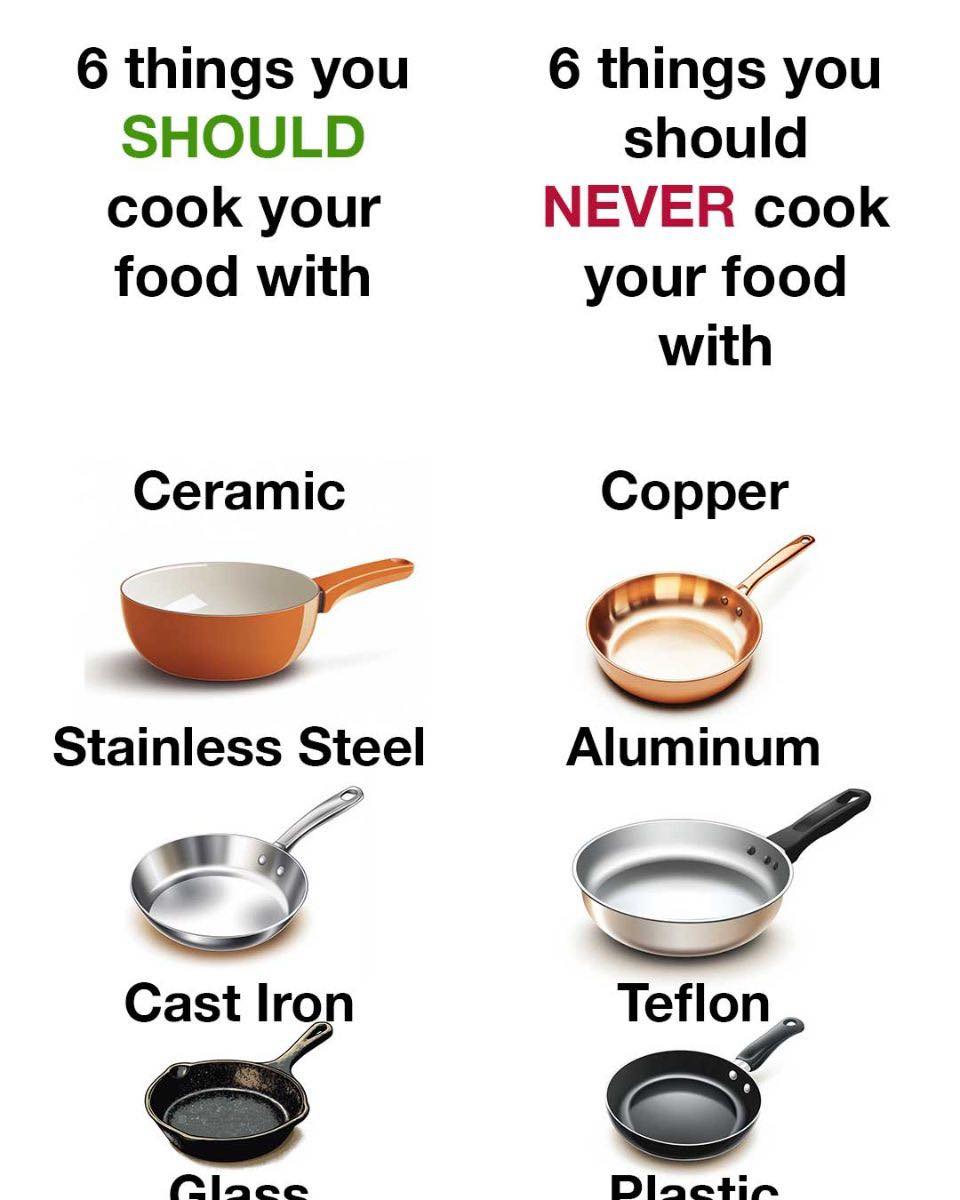ADVERTISEMENT
**Why avoid it?**
– **Health concerns:** When Teflon is heated to over 500°F, it can break down and release toxic fumes, which can be harmful.
– **Durability:** Over time, the nonstick surface can wear off, leading to peeling and contamination of your food.
– **Not heat-resistant:** Teflon is not designed for high-heat cooking, and using it at those temperatures can damage both your cookware and your health.
#### 3. **Copper Cookware (Without a Lining)**
Copper cookware is great at conducting heat, but it’s not the most practical for cooking certain foods. Copper can react with acidic foods, such as tomatoes or vinegar, causing discoloration and altering the taste of your dishes.
**Why avoid it?**
– **Reactivity:** Copper reacts with acidic foods, which can negatively affect flavor and lead to health risks.
– **Expensive and delicate:** Copper cookware can be expensive and prone to tarnishing or damage. If you do choose copper, make sure it’s lined with stainless steel.
#### 4. **Plastic Utensils in High-Heat Cooking**
Plastic utensils are common in many kitchens, but they should never be used when cooking at high temperatures. Plastic can melt or warp when exposed to heat, contaminating your food and potentially releasing harmful chemicals.
**Why avoid it?**
– **Melting or warping:** Plastic utensils can warp or melt when used in hot pans, leading to food contamination.
– **Chemical leaching:** Some plastics contain harmful chemicals like BPA, which can leach into your food when heated.
#### 5. **Non-Stick Aluminum Foil**
While aluminum foil can be a great tool for wrapping food for baking or grilling, **non-stick aluminum foil** should be avoided in certain situations. The coating on non-stick foil can be problematic, especially when it comes into direct contact with high-heat surfaces, releasing chemicals into your food.
**Why avoid it?**
– **Toxicity concerns:** Some non-stick coatings, especially those with PTFE, can break down under high heat and pose health risks.
– **Inconsistent performance:** Non-stick foil may not deliver the same results as regular foil, especially for high-heat grilling or roasting.
#### 6. **Teak Wood Cooking Utensils**
Teak wood is a beautiful and durable material, but it’s not the best choice for cooking utensils. While it’s great for furniture, it’s less than ideal for food preparation due to its density and the fact that it can absorb moisture, oils, and food particles.
**Why avoid it?**
– **Absorbs moisture and food:** Teak can absorb oils and moisture, leading to bacteria build-up and odor retention.
– **Can crack:** The density of teak makes it prone to cracking or splitting, especially when exposed to high heat.
—
### **Conclusion:**
The tools you use in the kitchen can dramatically affect the quality of your cooking and the safety of your food. By investing in the right utensils, cookware, and tools, you can elevate your cooking experience while avoiding the pitfalls of using the wrong items. Stick with durable, non-reactive materials like cast iron, stainless steel, and nonstick pans, and steer clear of aluminum cookware, Teflon, and plastic in high-heat situations. With these guidelines in mind, you’ll be able to cook with confidence and enjoy delicious meals every time!
ADVERTISEMENT
